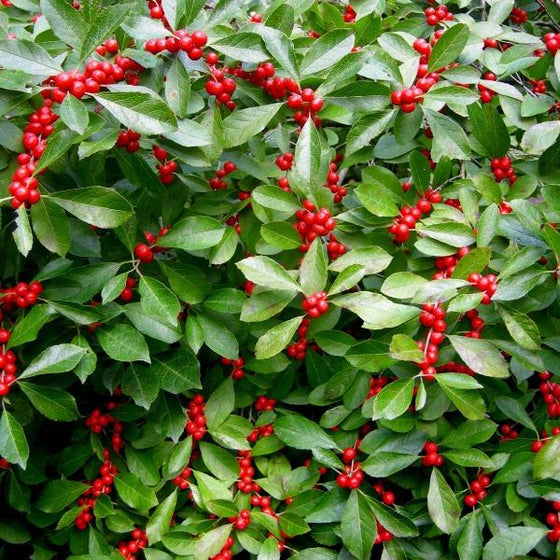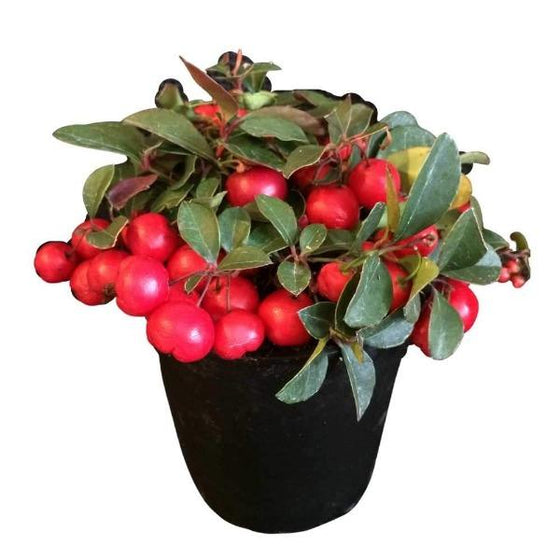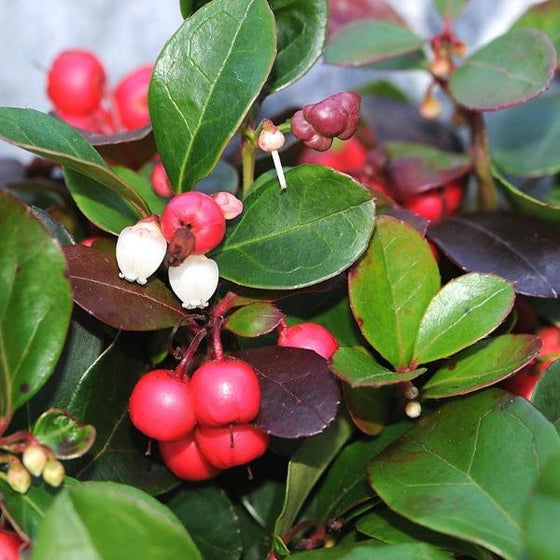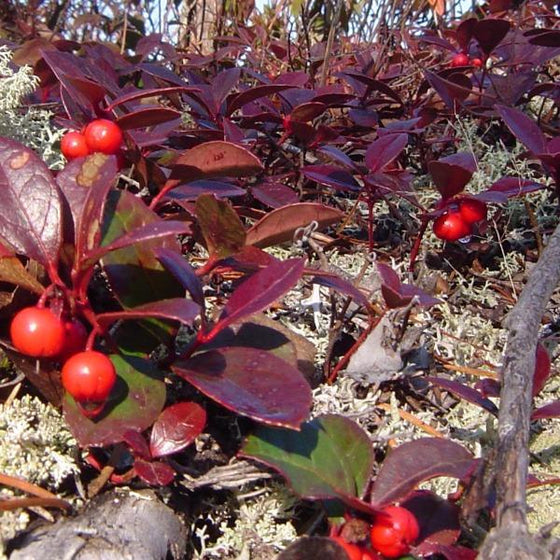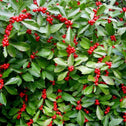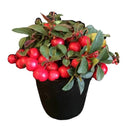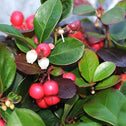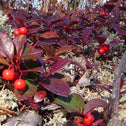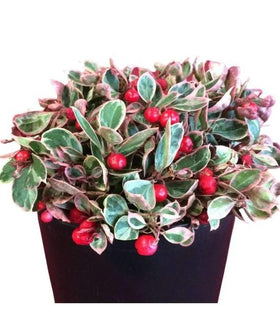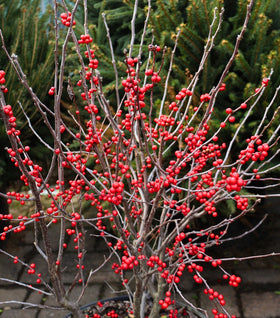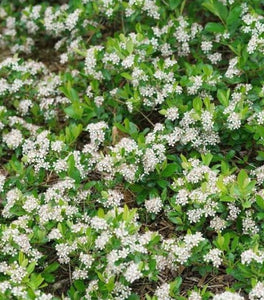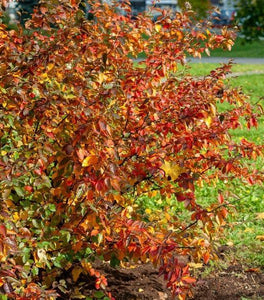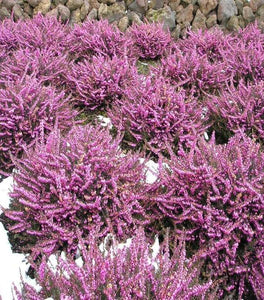Images Depict Mature Plants
Teaberry (Gaultheria procumbens) Wintergreen 'Berry Cascade' Shrubs
Teaberry Plants (Gaultheria procumbens) are a small groundcover shrub native to eastern North America. They've been found as far north as Newfoundland, Canada, and as far south as the state of Alabama. It's a favorite plant for holiday decoration because it keeps its vibrant red berries and its green leaves all throughout the winter!
Its berries are edible, but we don't recommend eating them in large quantities because of the wintergreen oil that is produced. The flavor of the teaberries and the scent of the wintergreen oil is very similar to peppermint or spearmint, even though it is not a part of the mint family.
The cultivar 'Berry Cascade' earns its name because of the way the berries grow all along the branches, creating a magical cascading effect that is perfect for holiday decor. Winterberry plants can withstand more shade than most - many people pot them and bring them inside for a festive pop of indoor color in a cool spot with partial, indirect light.
In the spring, teaberry plants produce tiny, white, bell-shaped flowers, which make way for the edible minty berries in late summer. They spread more often through duplication via the rhizomes in their root system, rather than through seed dispersal.
Wintergreen teaberries are a favorite of deer, chipmunks, squirrels, and other woodland creatures native to North America. If you plan to plant them as a low garden border, we recommend taking precautions to prevent deer from trampling into your garden to get to them.
Gaultheria procumbens goes by many, many names - Eastern teaberry, Wintergreen, boxberry, Canada tea, hillberry, grouseberry, deerberry, groundberry, gingerberry, creeping wintergreen, star berry, and the list goes on...
| Hardiness Zone: | 3-8 |
|---|---|
| Mature Height: | 3 to 8 Inches |
| Mature Width: | 1 to 3 Feet |
| Classification: | Evergreen groundcover shrub |
| Sunlight: | Part shade to full shade |
| Habit: | Low growing, spreading |
| Flower Color: | White, small, bell-shaped flowers |
| Berries: | Edible, light red to scarlet in color |
| Foliage: | Green in spring, summer, and fall, slightly reddish in winter, oils in leaves have a minty aroma |
| Soil Condition: | Prefers slightly acidic, well-draining soil |
| Water Requirements: | Evenly moist, low maintenance |
| Uses: | Borders, rock gardens, indoors, container gardens, shaded and wooded gardens, banks |
| Temperature | Thrives in cooler temperatures, needs more shade in places with hotter summers |
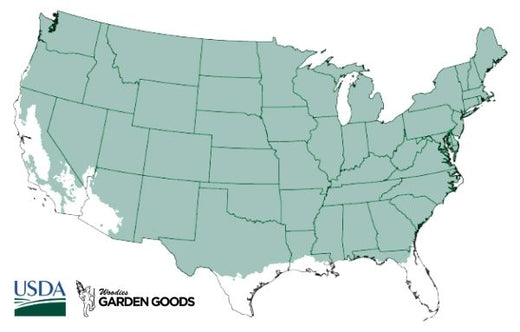
How to Care for Wintergreen Teaberry 'Berry Cascade'
Be sure to read our planting instructions to ensure a healthy and happy plant for years to come!

What is the best soil for Gaultheria procumbens?
American wintergreen plants prefer a slightly acidic soil. When planting, you can amend your soil with peat moss and organic matter to lower the pH slightly and allow the roots to establish themselves. Amending your soil will also ensure proper drainage so that the roots do not sit in water. We recommend using an enriched soil such as Espoma Organic Potting Mix or Foxfarm's Ocean Forest Potting Soil.

How much sun is right for Eastern Teaberry?
Gaultheria procumbens needs cool shade to thrive - it cannot tolerate direct light unless it is for a very short part of the day (morning preferably). This makes it a great groundcover choice for north or east facing gardens. An area with partial shade will encourage the most berries to grow. It can actually tolerate full shade as well, making it a good choice for shaded garden borders, container gardens or indoor pots.

When should I prune my Wintergreen plants?
Teaberry plants can either be pruned in early spring down to the wooded branches, or immediately after flowering. Some people like to make a tea out of the leaves and twigs - make sure to save your cuttings if you'd like to try this spearmint-flavored tea.
How much water does Gaultheria procumbens need?
Wintergreen plants prefer evenly moist soil. Water every few days if planted outside until the plant is well established, then only once or twice a week as needed. In planted indoors, water when the top 1/2 of an inch feels dry to the touch (you can check by pressing your index finger into the soil up to the first joint).

